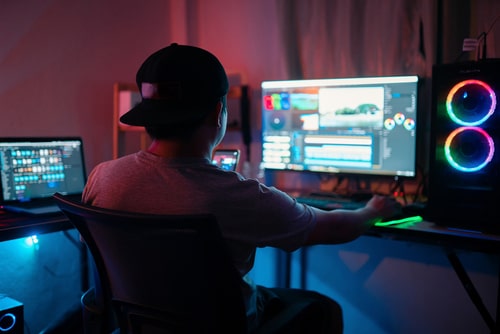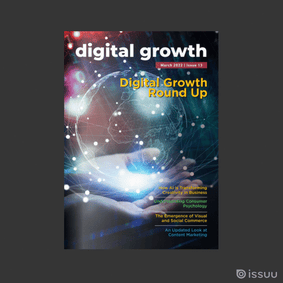You have probably heard of the creator economy by now. But what exactly is it?
The creator economy is defined as a set of businesses built by over 50 million independent content curators, creators and communities and includes influencers, videographers and bloggers. It is also associated with the software that it is built on such as specific digital platforms and finance tools designed to help these creators monetize their efforts.
Currently, there are three creator economy profiles:
- Creators who build out whole teams and assemble tools to begin their businesses.
- Creators who move their fans from social media and onto their own apps and websites.
- Creators gaining power in the media ecosystem as fans seek to connect with individual personalities as opposed to a variety of faceless publishers.
Today, over 50 million people across the globe consider themselves content creators and despite the creator economy only being 10 years old, this business model has become the fastest-growing small business to date.
These content creators can be found on a variety of platforms including YouTube, TikTok, Patreon, Discord and Twitch as these kinds of platforms are fuelling direct creator-to-fan communication and opening the door to new kinds of monetization.
However, the above-mentioned platforms are just the beginning of this growing economy and Web3 technologies such as machine learning, augmented reality, blockchains and Artificial Intelligence (AI), are changing the way creative content creators claim ownership and get paid for their work.

The Benefits of Web3 for the Creator Economy
Content Development and Creation
The most important part of the creator economy is content creation, and the Metaverse takes content creation to the level of Extended Reality, or XR.
XR combines augmented, mixed and virtual reality which amplifies marketing, gaming and creator communities through personal avatars, one-of-a-kind experiences and digital assets.
Today, we are already seeing the demand for digital assets and Non-Fungible Tokens (NFTs) are the perfect example of this. NFTs are unique cryptographic tokens that cannot be replicated as they exist on a blockchain, and these tokens represent real-world assets such as art, real-estate and even music. Tokenizing these assets makes buying and selling them more effective while reducing the possibility of fraud - which makes NFTs appealing to artists, brands and content creators.
A content creator that is leading the way in NFTs is YouTuber Logan Paul. Paul dropped his 99 Originals NFT, a set of 99 polaroids from Paul’s adventures across the globe. As he puts it, the NFTs capture “the most significant moments of my life captured on tangible film.” Paul’s fans are able to own these moments by purchasing these NFTs and adding them to their collection, making them a part of a more personalized community related to the creator.
Thanks to Web3 and NFTs, creators have access to greater avenues of content creation and monetization. But it doesn't end there. Artificial Intelligence and machine learning in the Web3 space also gives creators the opportunity to augment personalized and interactive NFTs based on the owner's usage pattern.
All these developments are leading the way toward easier content creation, smarter technology and tools, and new creative opportunities.
Contracts, Ownership and Royalties
Smart contracts are digital contracts stored on a blockchain that are automatically executed when predetermined terms and conditions are met. These kinds of contracts are used to execute a trade or agreement between all parties so that everyone involved can be safe in the knowledge that a record of the agreement is stored on the blockchain. Smart contracts also completely scale down on costs and formality associated with traditional contract methods, without compromising on safety, authenticity and credibility.
Creatives within the creator economy will now have their content ownership clearly defined for the first time, reducing piracy as content licensing will be captured on blockchain technology. Another benefit for creators is that royalty payments can be included in smart contracts, ensuring payment release to the creator - and guarantees payment automatically.
New Revenue Streams
Thanks to Web3, content creators will be able to drive revenue through new channels and business models. In the past, preceding the introduction of the internet, artists and creators would have to rely on a middleman - curators, media, dealers, stores etc. These middlemen would take a significant fee, leaving the creator with a small sum. As we head into the age of the internet, these middlemen became large organizations such as Amazon, Apple or Google - still leaving the artist or creator with little. Thanks to Web3 and marketplaces such as OpenSea, the artist or creator is in the driving seat.
They are also able to track the value of their work after every single transaction - and are able to monetize it.
The Wrap Up
Thanks to Web3, creators are able to control their careers like never before. Blockchain and Web3 technology is putting power in the hands of content creators, heralding a new age of the creator economy while giving creatives the respect they deserve.
Interested in upping your creator game? The Nexa experts are here to guide you through this process - and the endless opportunities for business growth in the Metaverse and Web 3.
Contact us today for all your Web3 needs.
%20(1).png?width=2701&height=607&name=BRC_NEXA_LOGO_BLACK%20%26%20VIOLET%20(1)%20(1).png)
%20(1).png?width=2701&height=607&name=BRC_NEXA_LOGO_WHITE%20(2)%20(1).png)














Comments